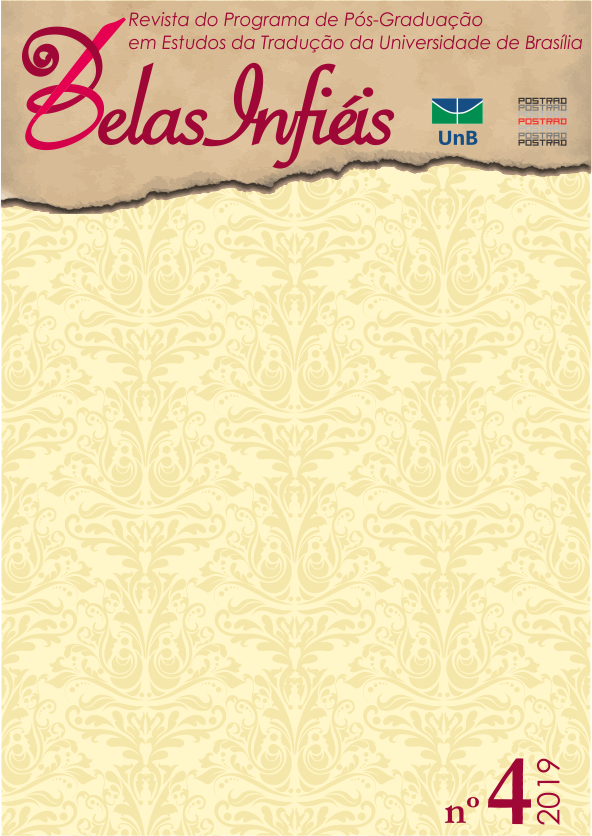Vulgarization and destruction of andalusian speech in literary translation
DOI:
https://doi.org/10.26512/belasinfieis.v8.n4.2019.22624Keywords:
Literary translation. Ethical translation. Language overlays. Andalusian speech. Spanish-Portuguese.Abstract
Literary translation in the Spanish-Portuguese language pair assumes facing challenges in a range from linguistic issues related to the proximity between both languages ”‹”‹to the decision-making by the translator. This article aims to focus on the latter challenge by discussing and highlighting the translation professional’s ethical attitude regarding the phenomenon of language overlays. For this purpose, a fragment of La Sombra del Viento (novel originally written in Spanish by Carlos Ruiz Zafón) was chosen in order to help the analysis of the performance of two translators involved in this task in the light of the postulates of Berman’s deforming tendencies (2014 [1999]). Special attention has essentially been paid to the reflections of this theorist concerning the disappearance of language overlays and the destruction of vernacular linguistic networks. The contrastive analysis focused attention on the solutions offered by the translators in Portuguese from Brazil and Portugal for the Andalusian speech problem that has been identified in the communication mode of one of the characters. The results might be a more convincing example of the multiple possibilities of solution to literary translation. Above all, the study revealed the imposition of a set of peculiarities (omission, transformation, homogenization, among others) that influenced each one of those involved in their particular way of performing their job. Actually, a paradox in which each translator acts in different ways has been identified. All of those ways are found in Berman's deforming trends collection.
Downloads
References
BERMAN, Antoine. La traducción y la letra o el albergue de lo lejano. Traducido por Ignacio Rodríguez. 1. ed. Buenos Aires: Dedalus Editores, 2014. 160 p.
KOINÉ. En: Diccionario de la lengua española. 23. ed. Real Academia Española, 2014. Disponible en https://dle.rae.es/?id=Mi9J3sc. Consultado el 1 out.19.
MESCHONNIC, Henri. Poética do traduzir. Traducido por Jerusa Pires Ferreira e Suely Fenerich. São Paulo: Perspectiva, 2010. Impreso. 279 p.
RUIZ ZAFÓN, Carlos. La Sombra del Viento. Barcelona: Círculo de Lectores (por Cortesía de Editorial Planeta), 2001. Impreso. 445 p.
RUIZ ZAFÓN, Carlos. A sombra do vento. Traducido por Marcia Ribas. Rio de Janeiro: Editora Objetiva, 2007. Impreso. 399 p.
RUIZ ZAFÓN, Carlos. A sombra do vento. 23. ed. Traducido por José Teixeira de Aguilar. Lisboa: Publicações Dom Quixote, 2013. Impreso. 507 p.
Downloads
Published
How to Cite
Issue
Section
License
Given the public access to this journal, the texts are free to use but requires the recognition of the original authorship and initial publication in this journal to be properly stated.
 The journal allows the use of works published for non-commercial purposes, including the right to submit the work to publicly accessible databases. Published contributions are the sole and exclusive responsibility of the author(s).Â



















